|
|
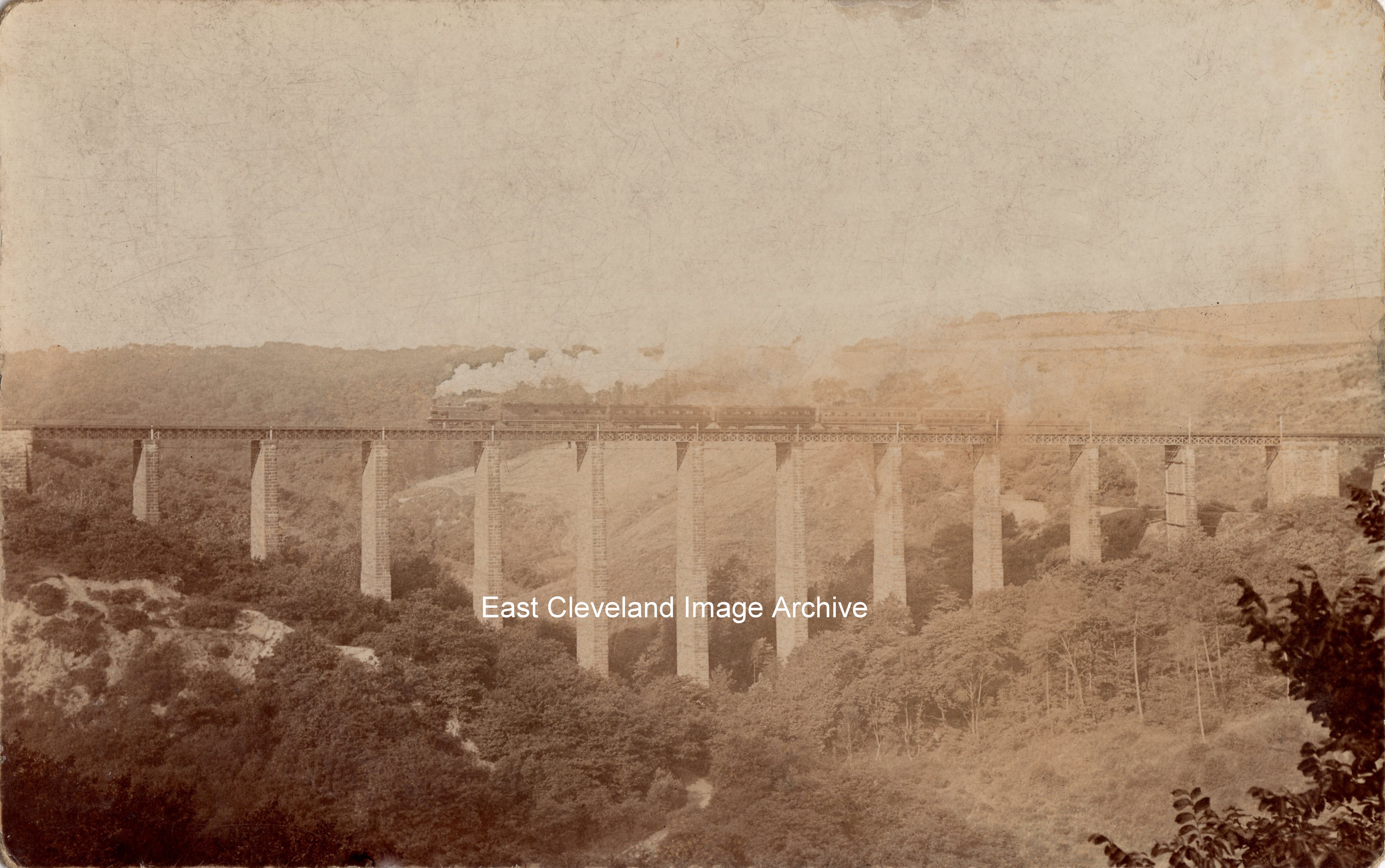
This Kilton Valley Viaduct view comes from an undated and unused postcard, possibly previous to 1905 and the in-filling between the supporting arches. It is possible that the locomotive will give a possible dating and the Archive would welcome any assistance. Geoffrey Allen has responded to our request with:”The locomotive appears to be a N.E.R Class O 0-4-4T (LNER/BR Class G5) it is in Lined NER Livery. These engines were built at Darlington Works between May 1894 and December 1901; 110 in total so a 1905 date is possible. They were used on the Saltburn to Scarborough service and the number of coaches may suggest that this is such a train. Of the six coaches the second to last appears to be an earlier 6 wheel coach, the last of which were built about 1897 all the rest are bogie coaches, the first is a birdcage brake coach and the last may also be the same but the details are obscured. The other 3 appear to be low roofed bogie coaches built from about 1895 to 1906.”
Image courtesy of Julie Tyrka; thanks to Maurice Dower for the update and many thanks to Geoffrey Allen for the excellent update.
Eamann O Ruairc tells us: “The man standing in front of it is my grandfather, Michael (Mick) Magee. He began working as a driver, but since he was a very skilled mechanic (he had served his time as a motor mechanic and had spent World War I as a driver in the Army Service Corps on the Western Front) he was soon put to work as a mechanic in the depot in Dormanstown. During his stay in Redcar; Mike became deeply involved in trade unionism and in socialist politics. At some point he became the chauffeur of a Fabian MP. Whether this was a full-time job or a part-time one I do not know. Mike may have worked for the Transport Workers Union and was also very active in the organisation of the 1926 general strike. In 1930 he emigrated to Detroit where he became a key figure in the trade unions in the Ford factories”. Craig White tells us: “Looks like Redcar Lane Cemetery chapel in background , so this would be Thwaites Lane running up to the Racecourse stands”.
Image and information courtesy of Eamann O Ruairc; Eamann is also seeking further information about United Bus Company in Redcar in the early 1920s. Thanks to Craig White for the update regarding location of this image.
The station at Ingleby which served the village of Ingleby Greenhow was opened in 1857 and was part of the Picton to Battersby line, it closed in 1954 for passenger traffic but remained open until 1965 for freight when the line to Stokesley closed. The locomotive 67288 was built in 1896 at Darlington, it was renumbered to 67288 by British Rail in 1948, it was removed from service in 1954; this gives an approximate date for this image of the early 1950s.
Image courtesy of the Pem Holliday Collection, information courtesy of “Disused Stations”.
Bell’s Pit miners leaving the mine in 1935. Joe Metcalfe is identified as holding the handrail at the bottom of the steps. Joe lived at 14 Bell’s Huts in the 1930’s; with his wife Clara Jane and George, who was possibly his brother. Can anybody assist with names of the other miners? Margaret Stafford has advised the Archive: “I am pretty sure the 1st miner at the bottom of the stairs, smiling and looking straight at the camera) is my uncle John (known as Jack of course!) Hicks, born 1909 and then living in Wood Street Carlin How. By 1939 he was living in Loftus, still a miner; married to Mary Hebron with two sons. He died in 1977.His father and father in law were also ironstone miners as were many of my extended family around Marske, New Marske, Skelton.”
Image and details courtesy of Trevor Metcalfe (grandson of Joe Metcalfe), thanks to Margaret Stafford for the update.
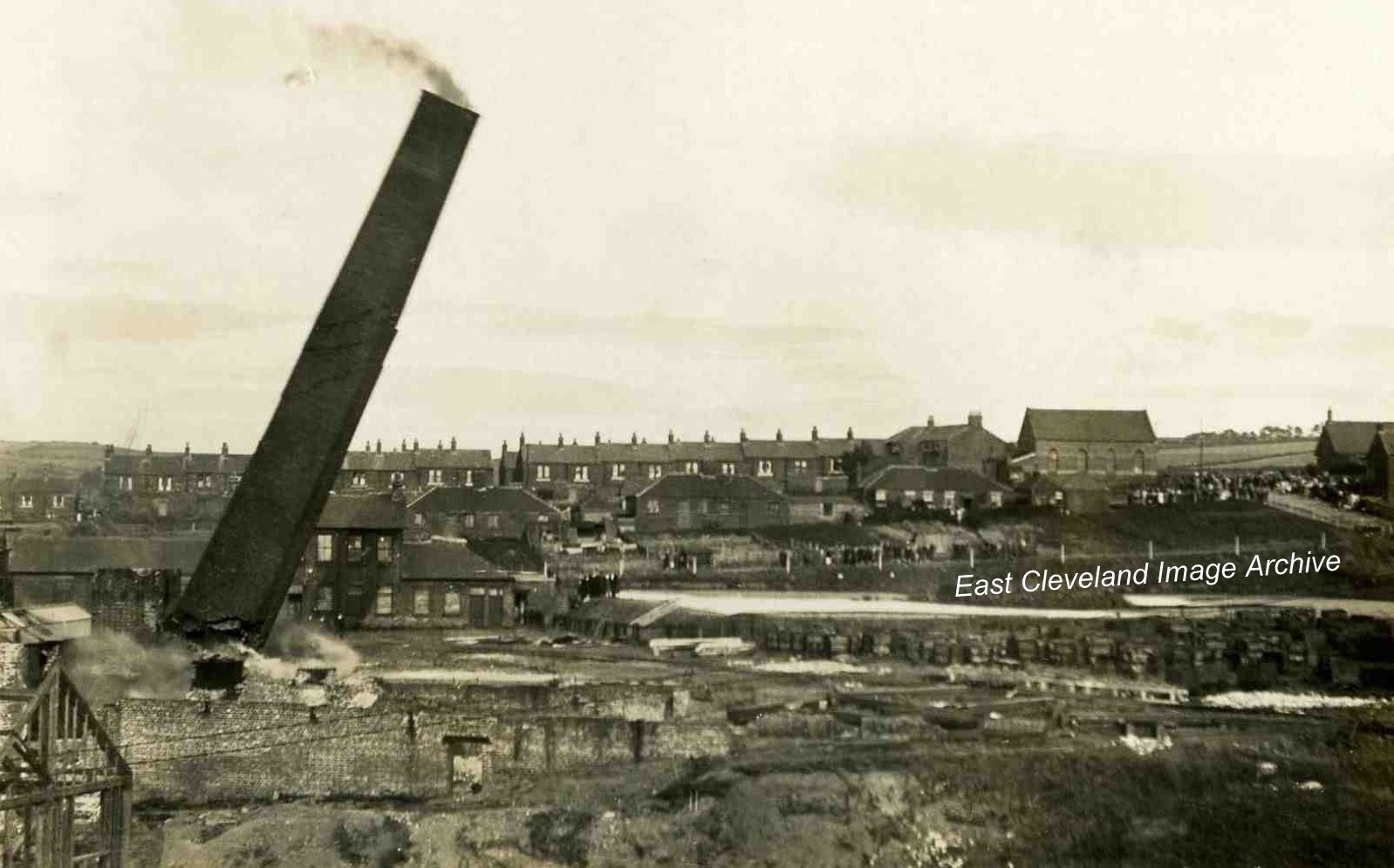
We have another copy of the demolition of the chimney at Liverton Mine, which gives the date of the event as Tuesday 24th August 1926. But it is interesting to compare the quality of the two images; our original ’Liverton Mine’ is of much poorer quality!
Image courtesy of The Pem Holliday Collection.

This image of the mine predates the installation of the aerial ropeway to the ironworks. The picking belt and trestle bridge to the North Loftus shaft are clearly seen.
Image courtesy of The Pem Holliday Collection.
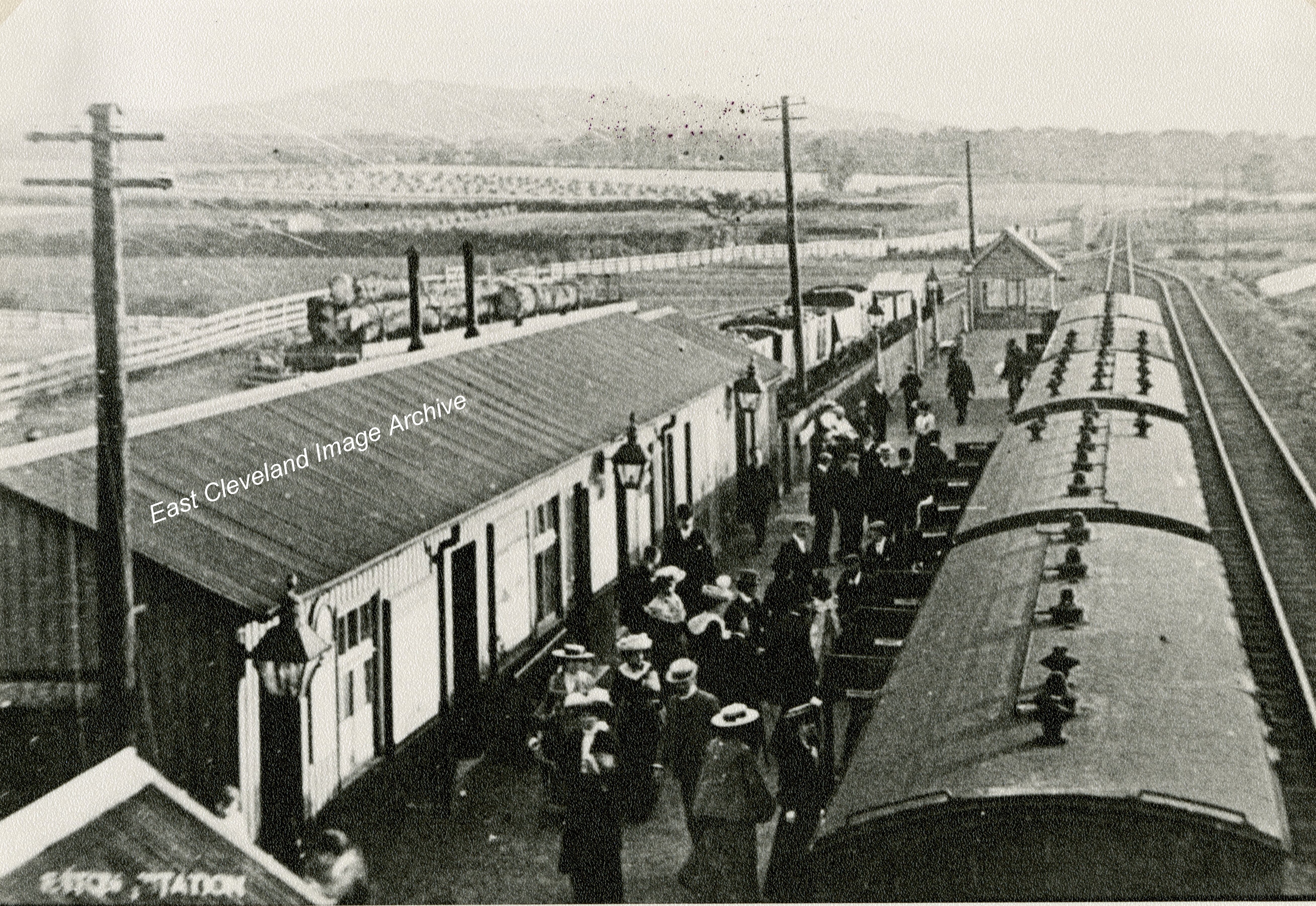
Eston railway station, circa 1910, the station opened to passengers on 1st January 1902. Later a canopy was extended over the platform to shelter the passengers; the roof of one platform signal box is just visible, the one at the other end of the platform was later removed. This was a short lived station, closing 11th March, 1929; a casualty of motor bus competition.
Image courtesy of The Pem Holliday Collection, additional information courtesy of “Disused Railway Stations”.
The Daily Herald instituted the Order of Industrial Heroism to recognise the ”Deeds of Valour” of those workers who had saved their fellow workers from danger of death. This became known as the ”Workers V.C.” Many of the recipients were awarded posthumously and also received other awards including the George Cross, George Medal and Royal Humane Society Medal. Just over 400 Workers V.C.s were ever awarded. J.M. Easton (Overman at Loftus Mine, Skinningrove) was presented with the Medal at the Union Council Middlesbrough on 14th December 1946. He was the 177th recipient.
Image and information courtesy of TUC.
Opening in 1885 as part of the Scarborough & Whitby Railway, the station was originally named Peak; being the highest and most exposed station on the line. The wooden waiting shelter being blown away at one time! Renamed Ravenscar in 1897 and it did not have a station house until 1896. It closed in 1965.
Image courtesy of the Pem Holliday Collection, information courtesy of ‘Disused Stations’.
A panorama of Skinningrove valley. The mine is on the left, with Overmen’s cottages next to the trestle bridge which crosses the beck to the drift into the bottom of Loftus North mine, the shaft used to hoist ironstone to the works. On the left the white enclosure of the newly built picking belt (1907), for cleaning the ironstone can be seen. Towards Mill bank, the mine rail sidings cross the beck this was originally extended to the old Whitecliffe mine. Kilton Viaduct is yet to be filled in, with Liverton mine above it. and the rail zig zag skirts the right hand side down the valley.
Image courtesy of Jean Carass.
Page 3 of 67«12345...102030...»Last »
|
|

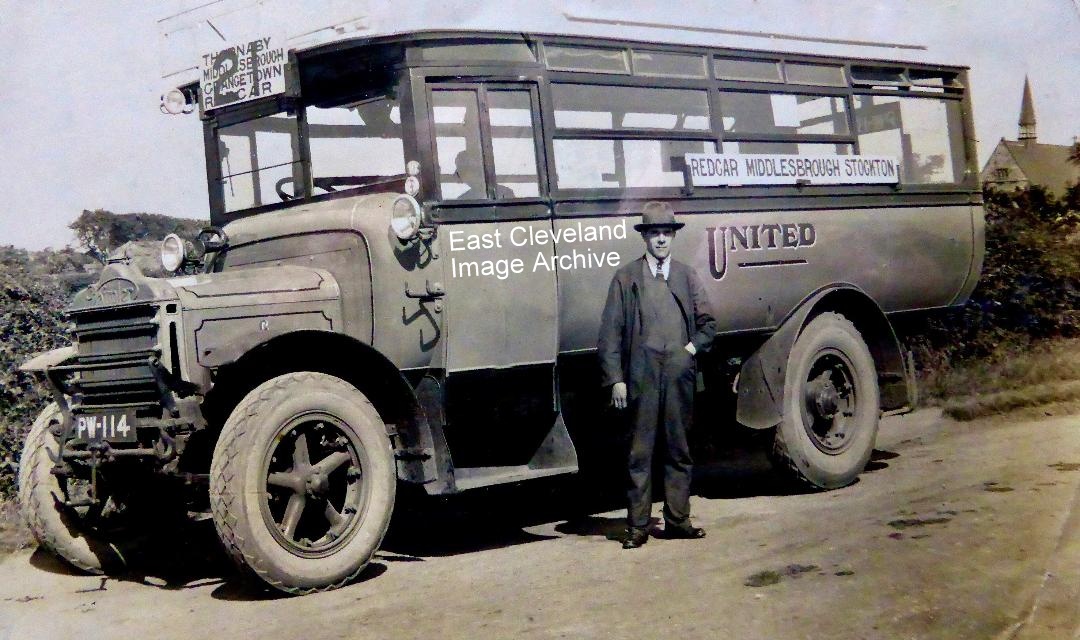
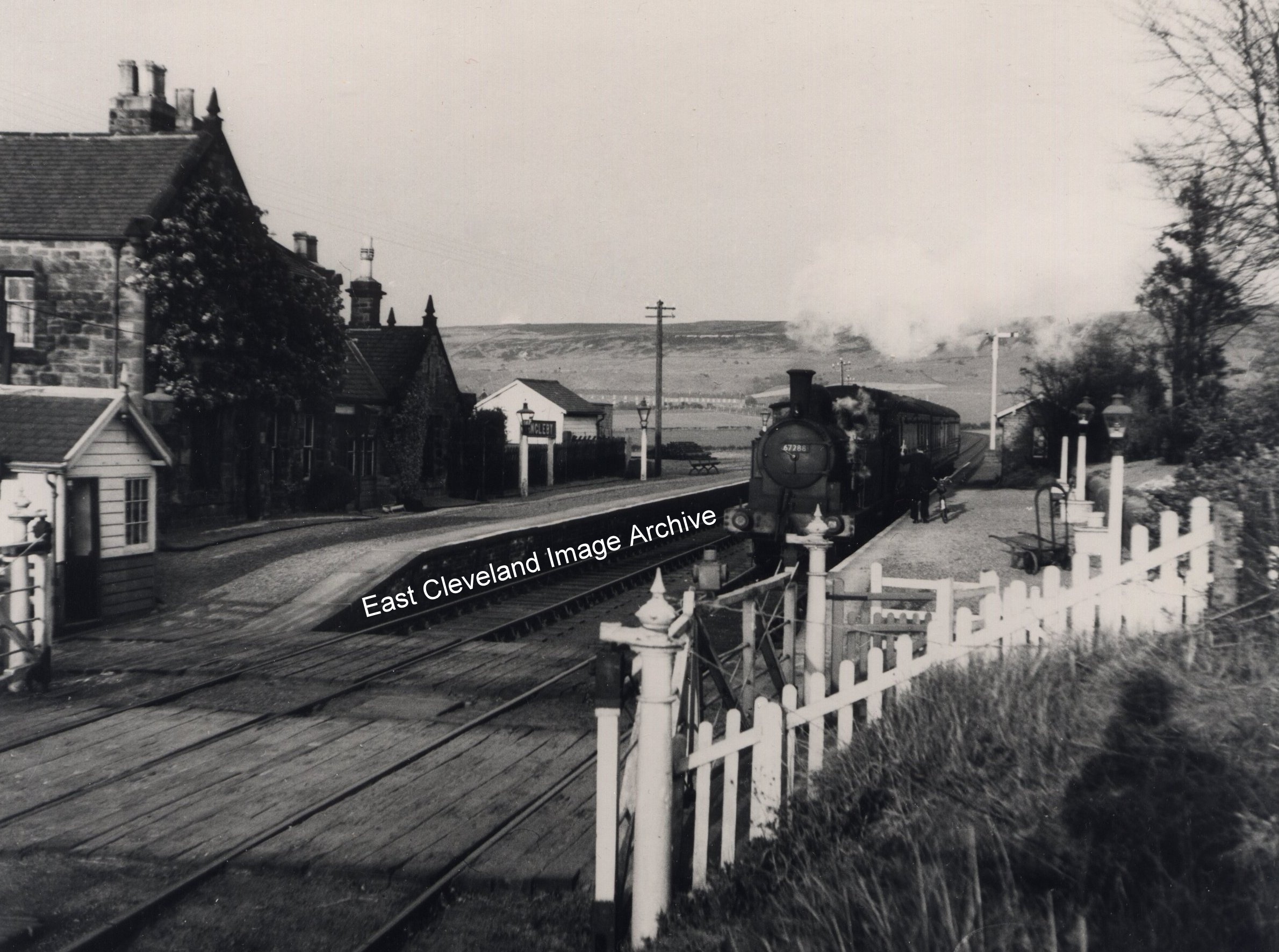
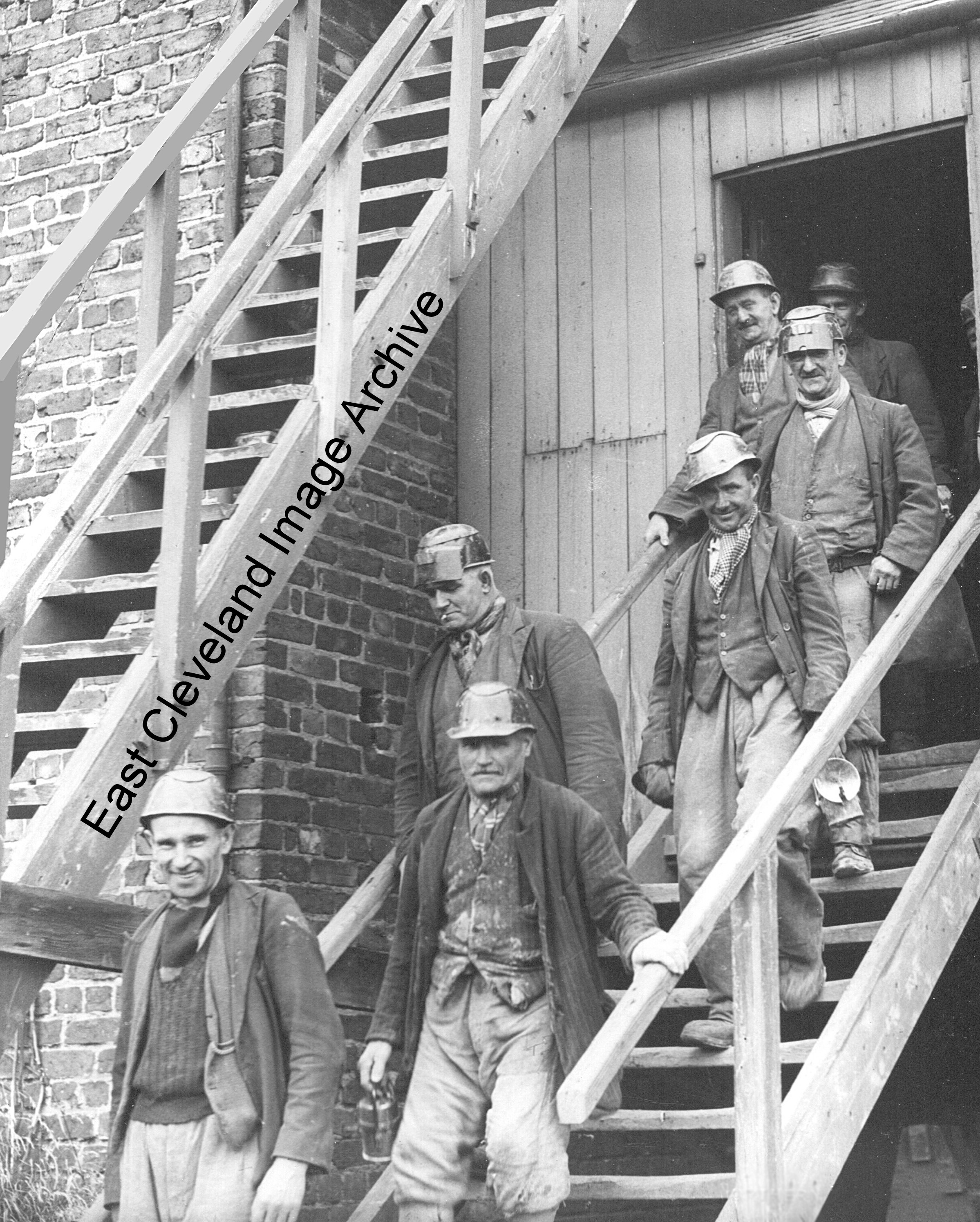



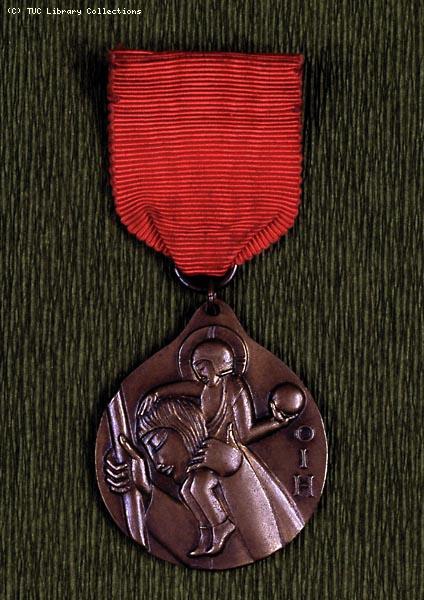
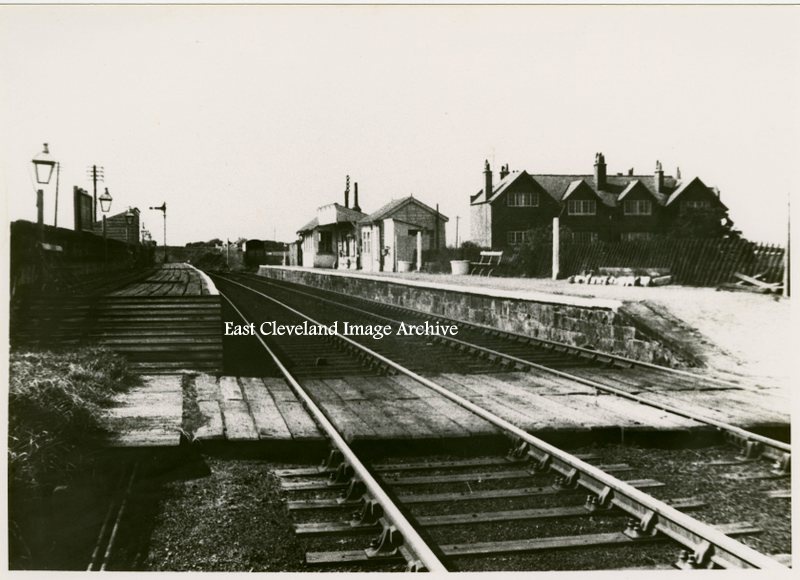
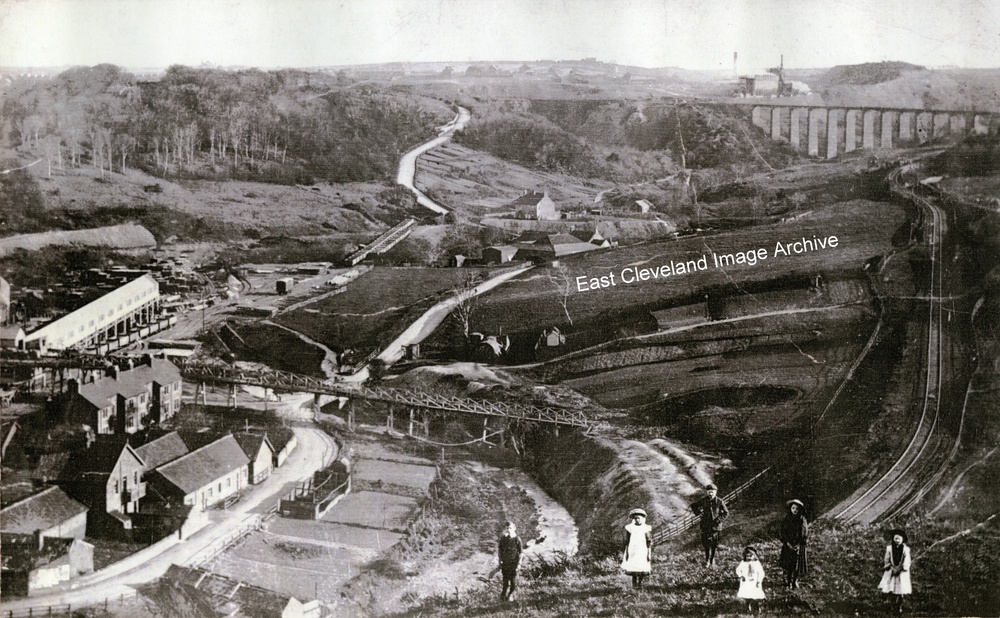
Recent Comments